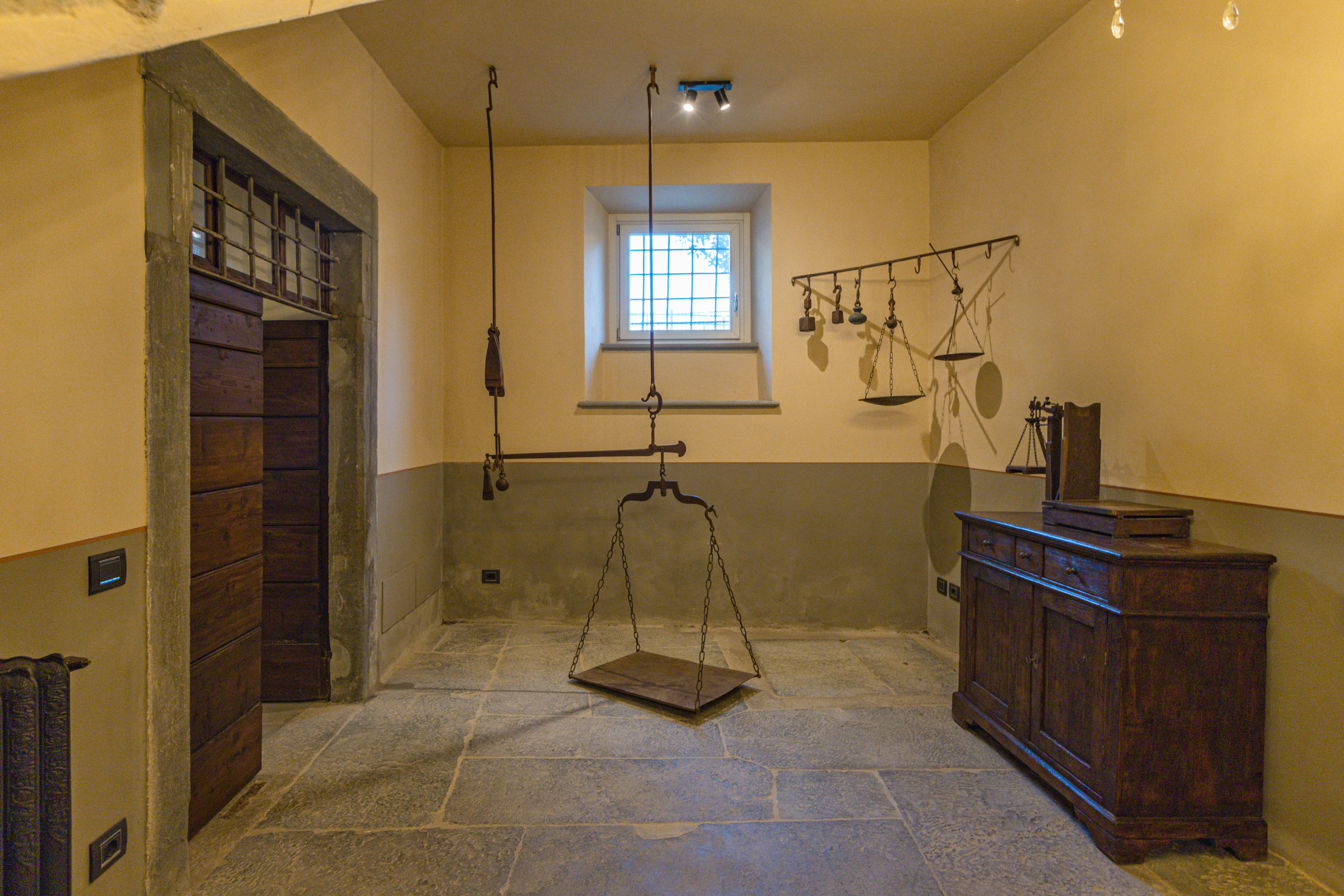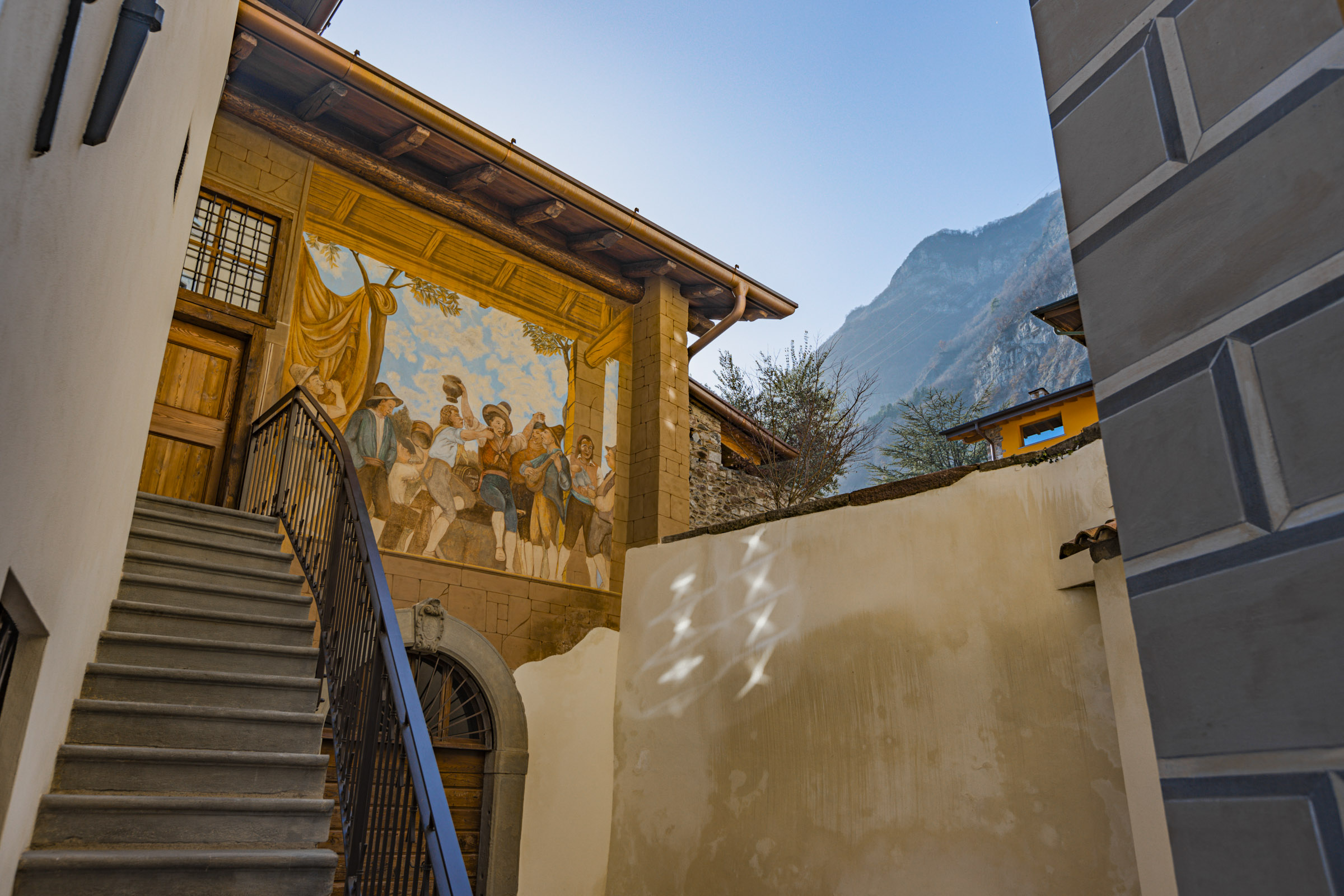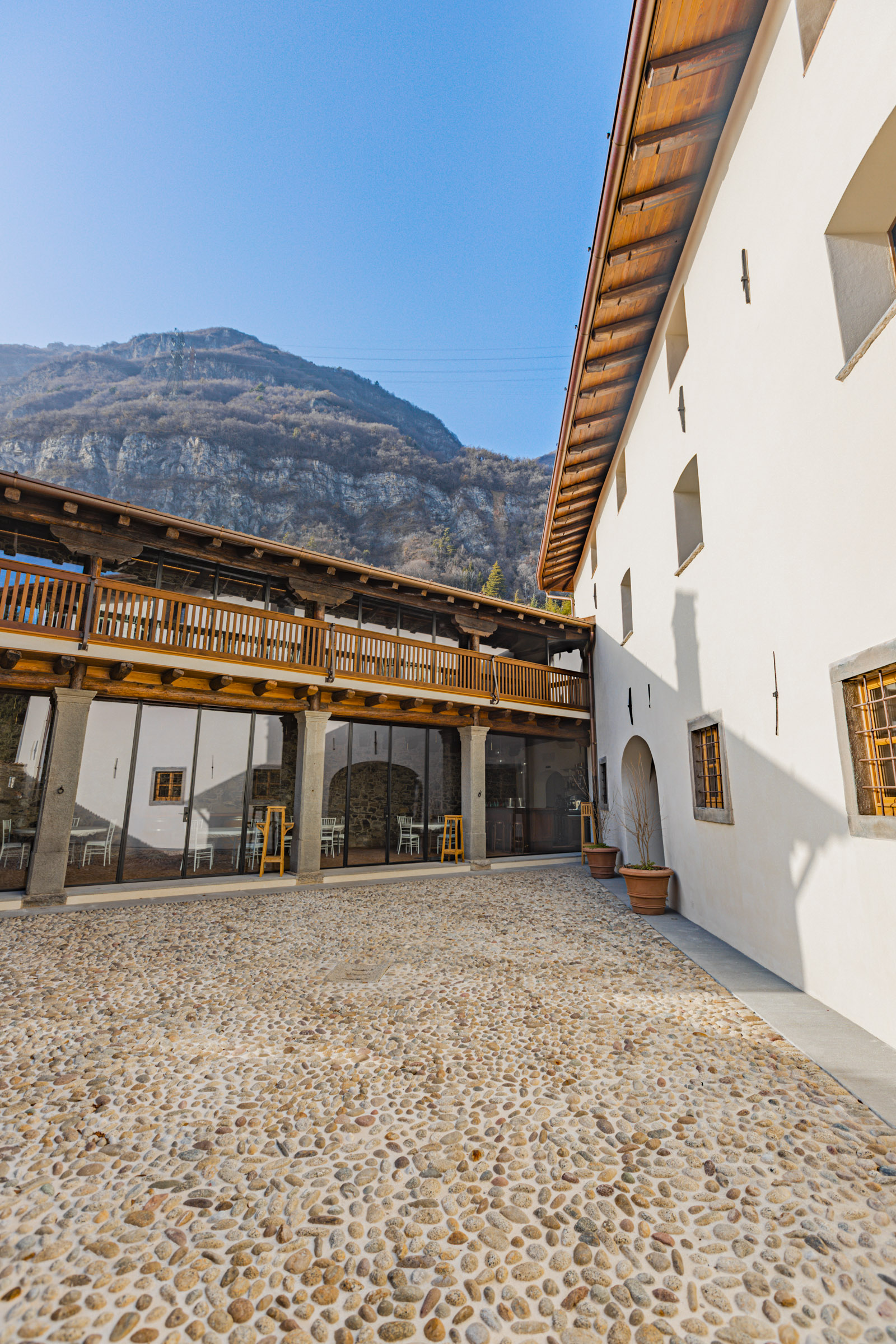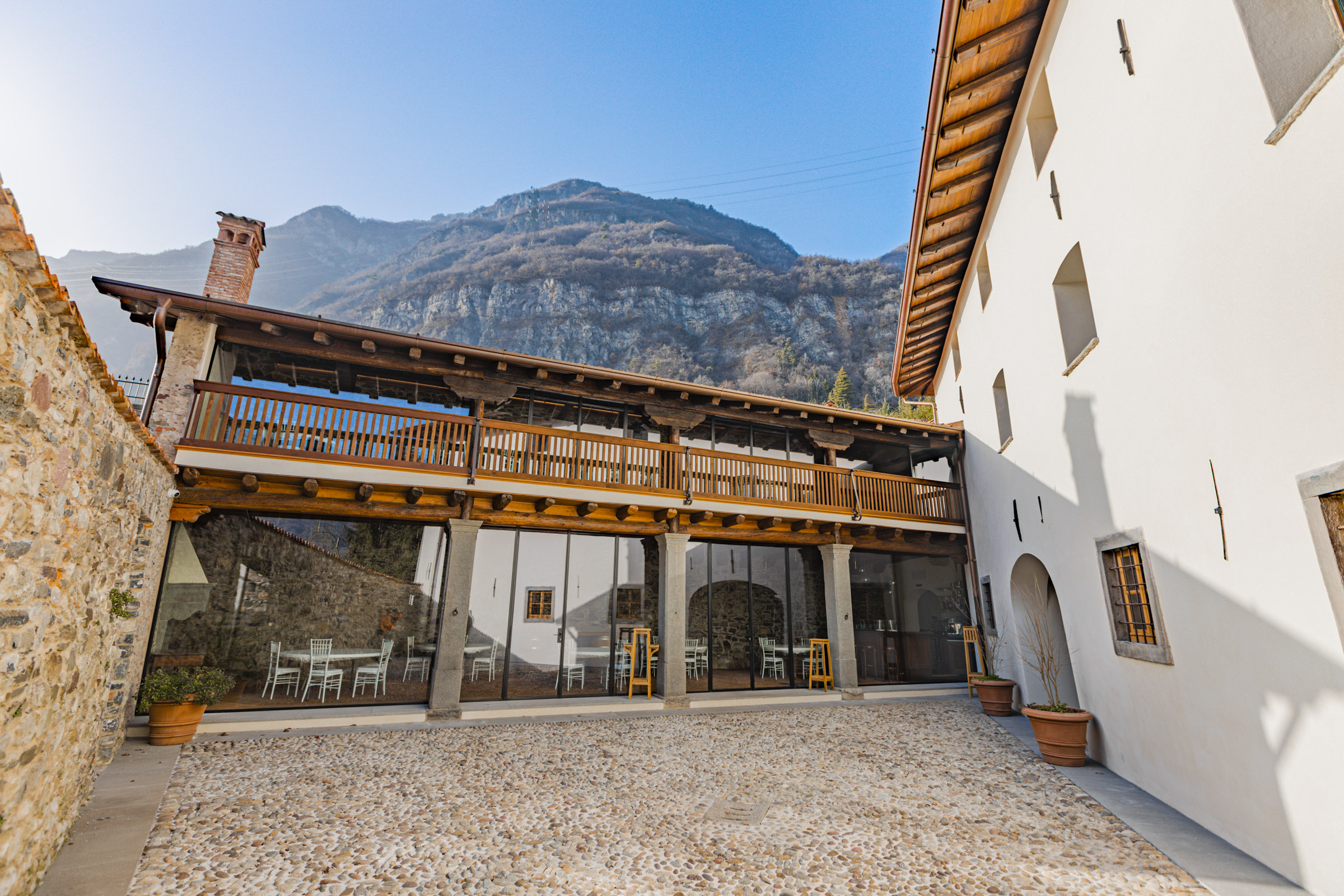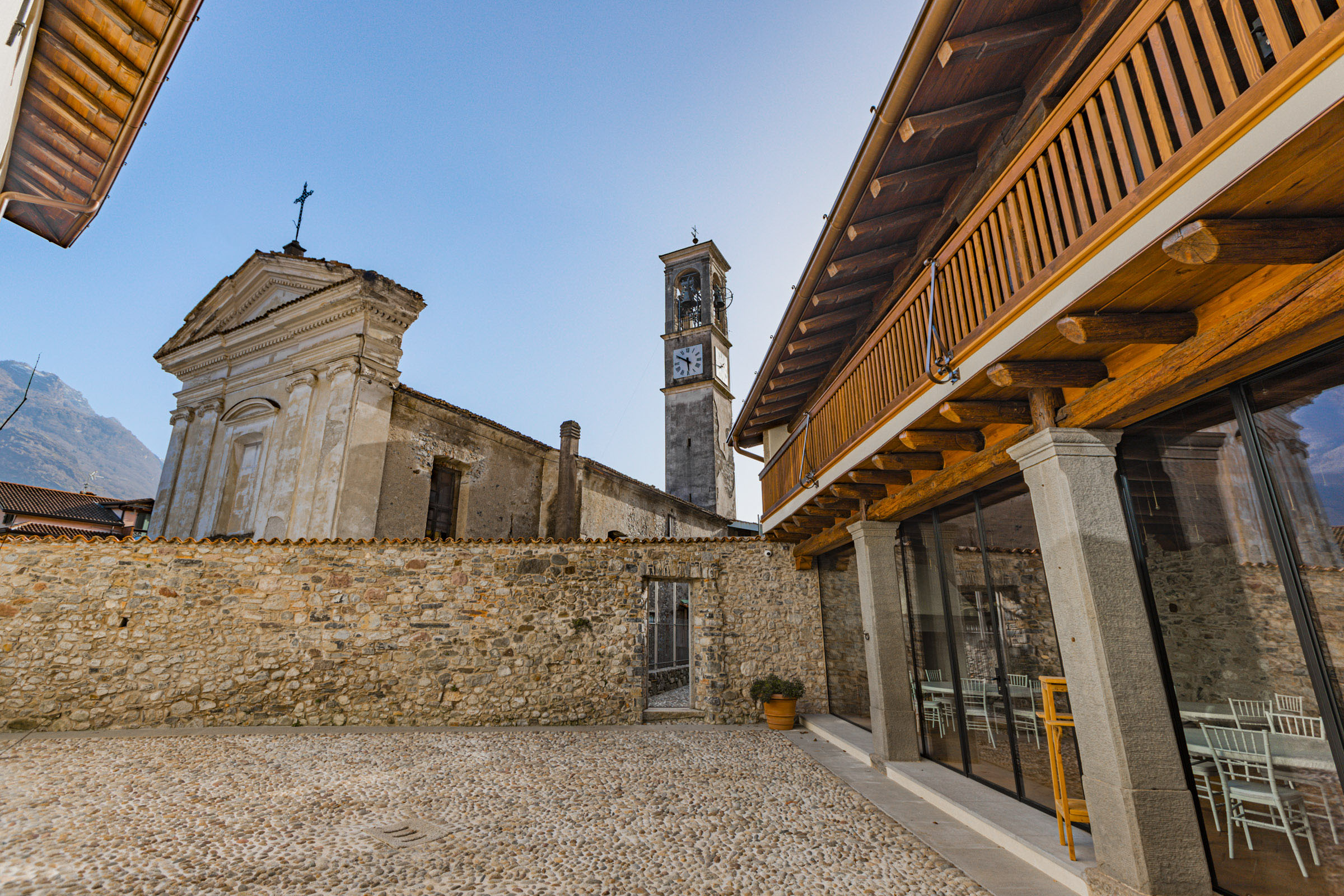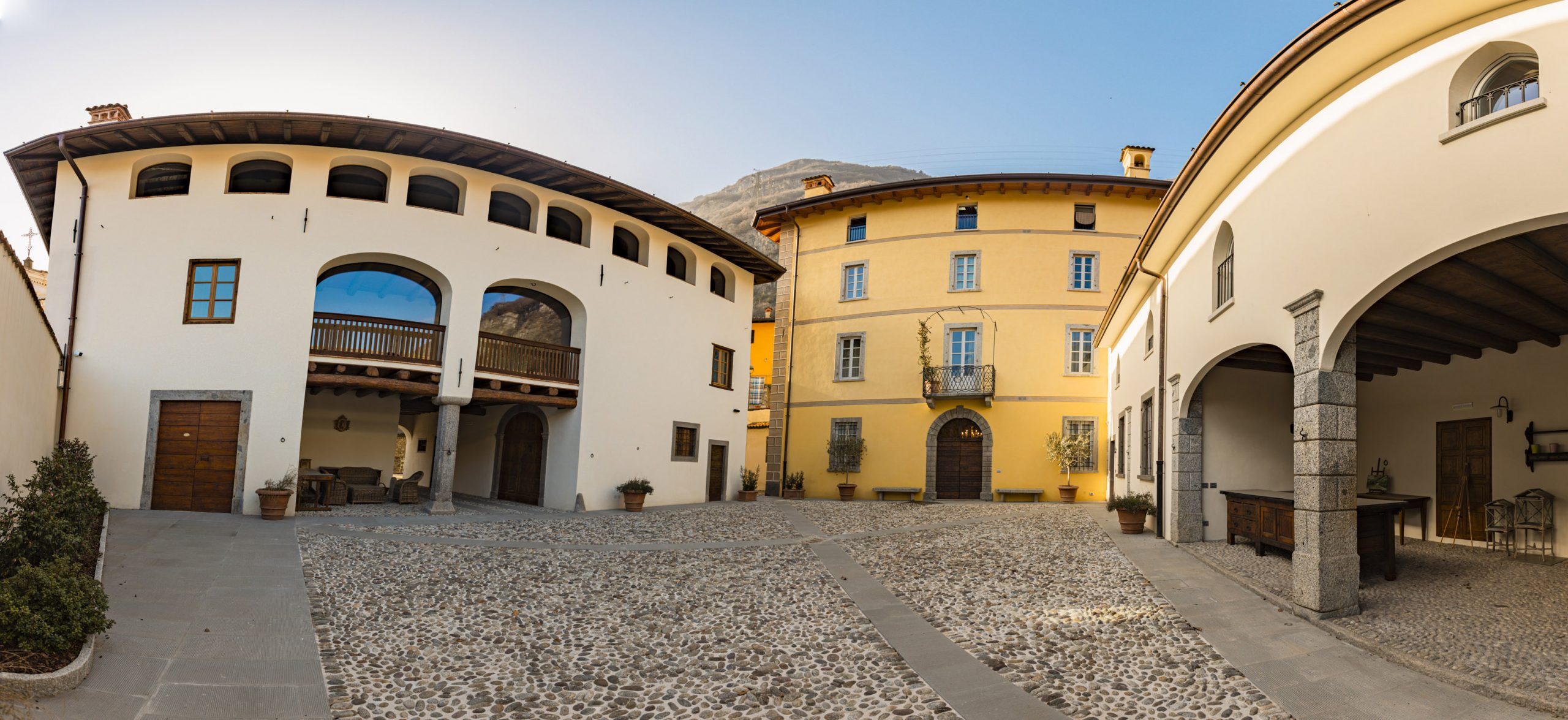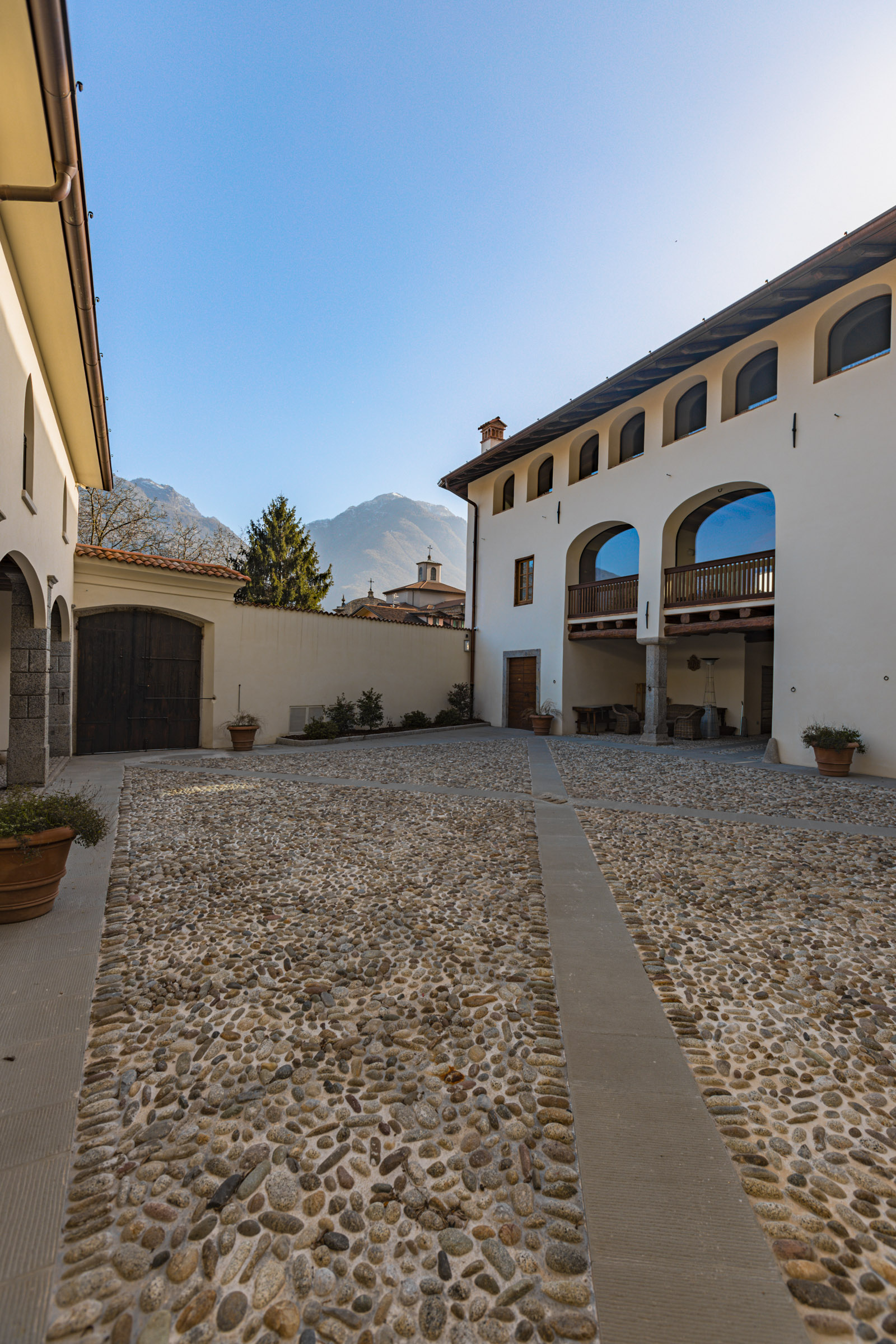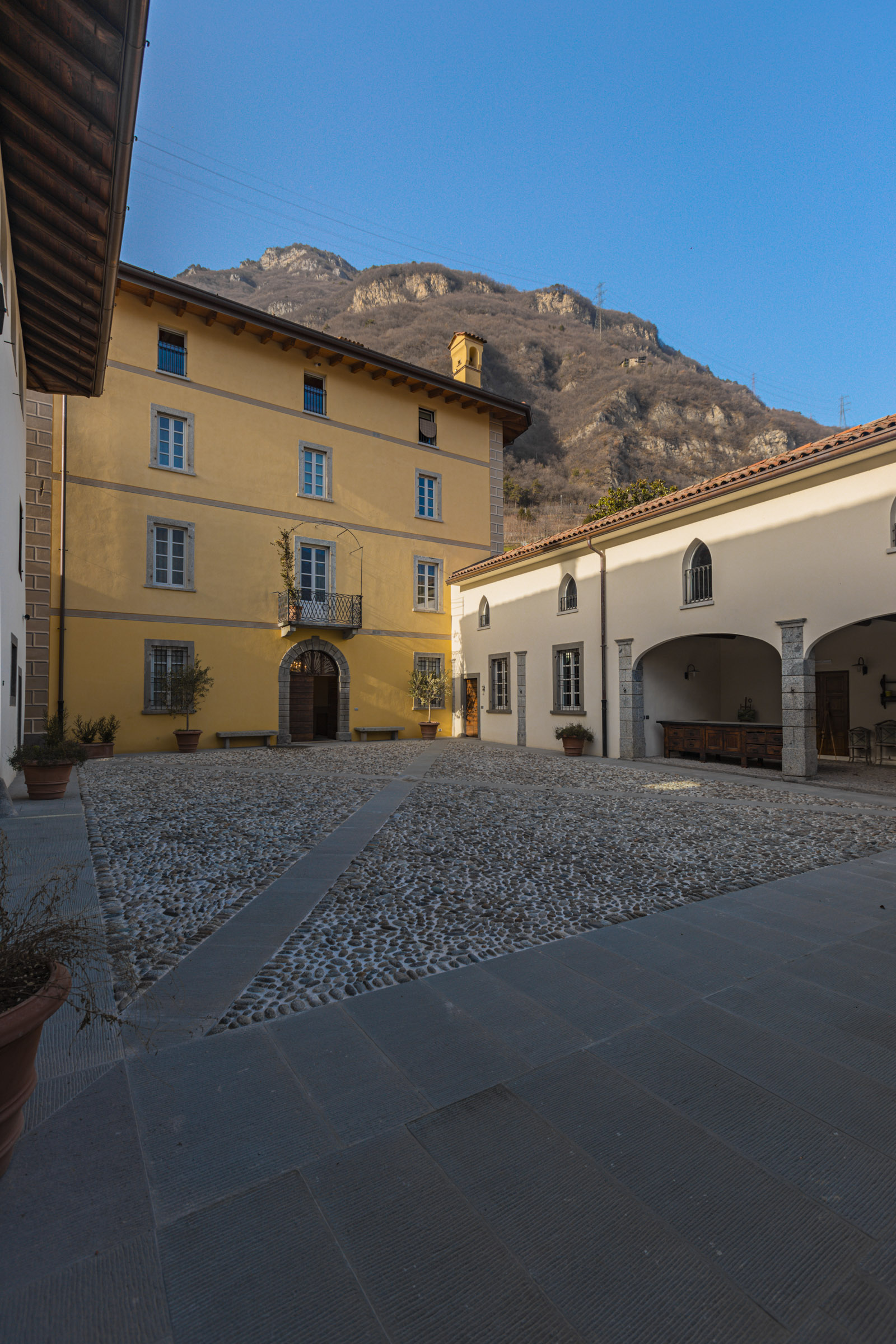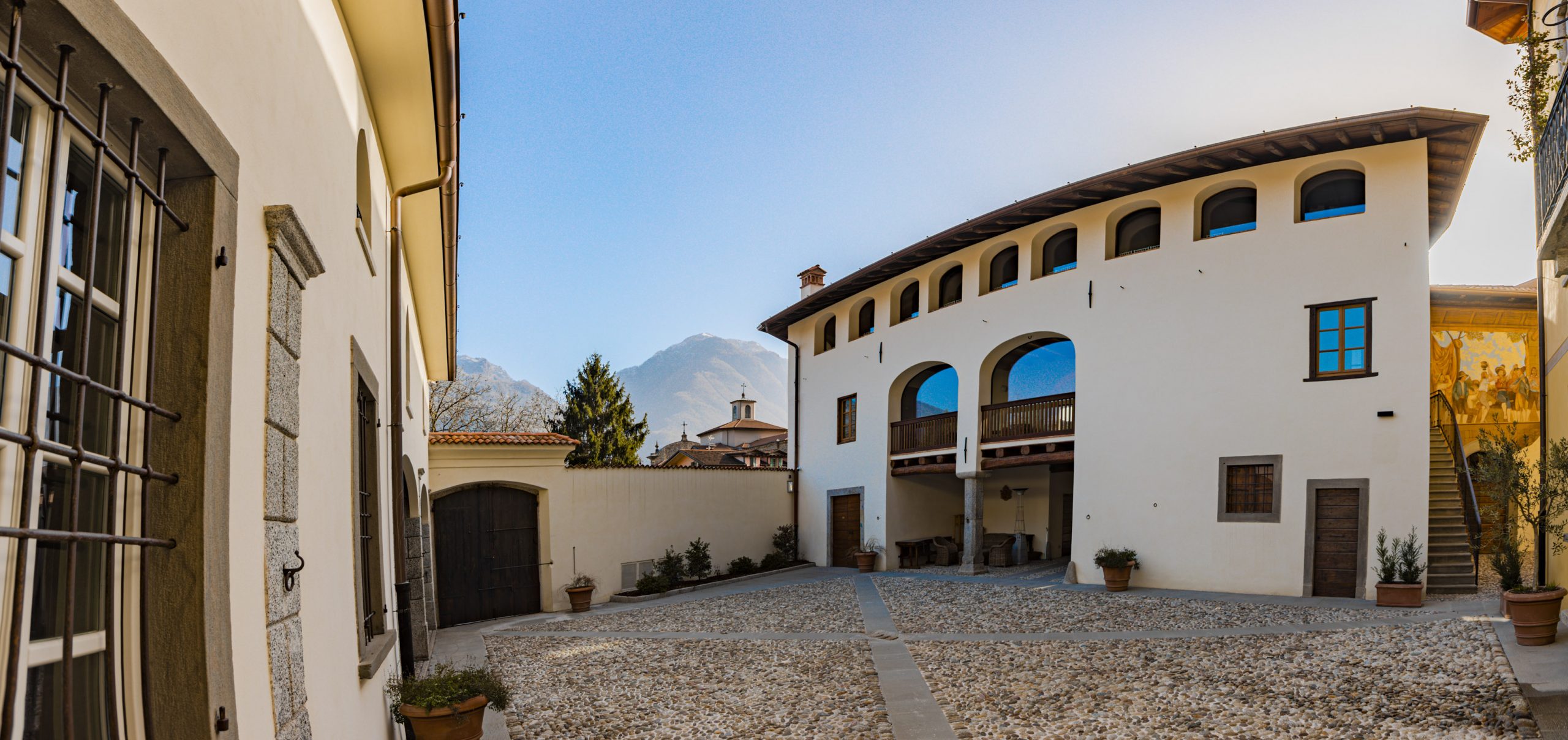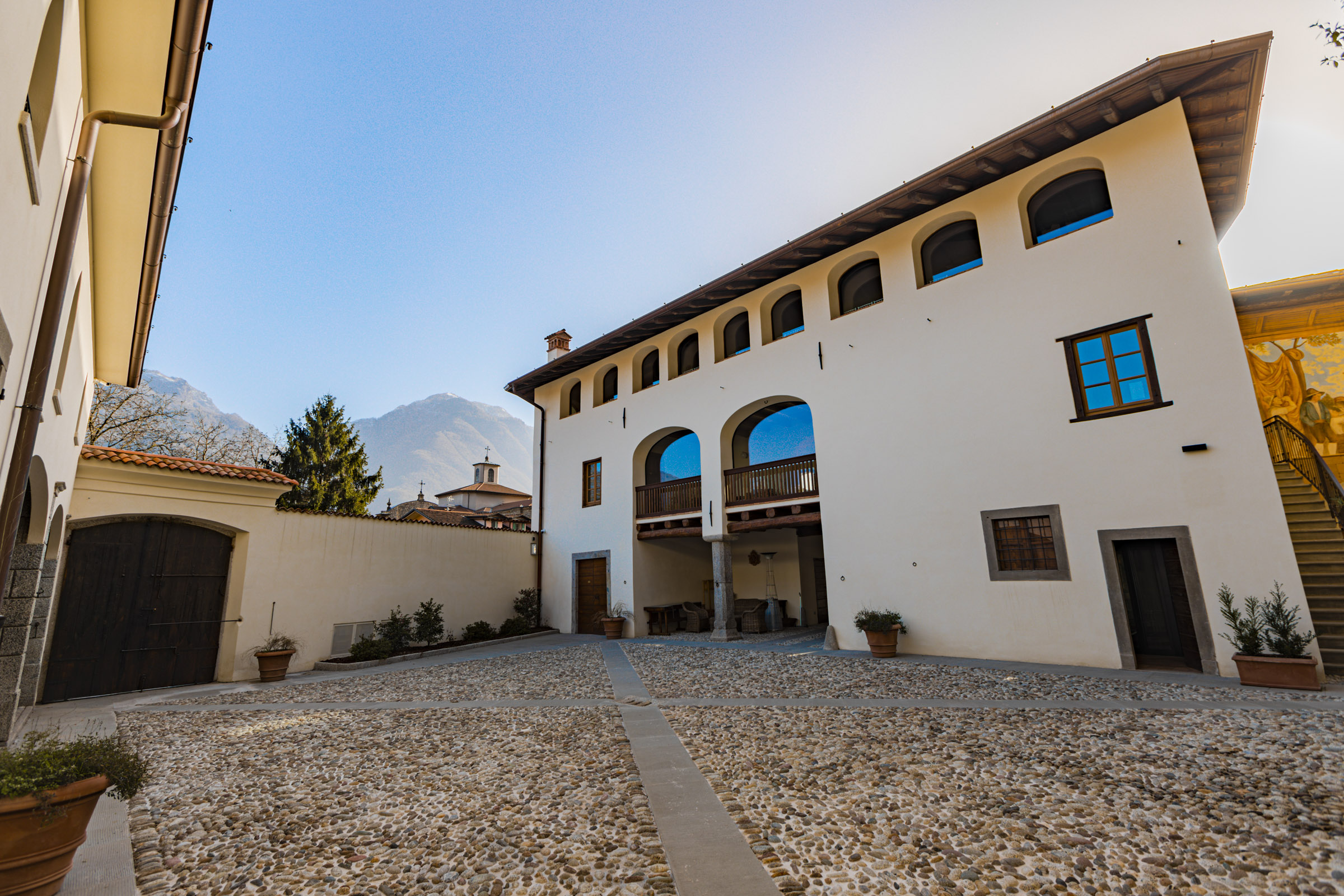The Glazel-Passerini complex in Via San Vittore
per person
Near the old church of San Vittore in Piancogno there is a group of buildings arranged around a large rectangular courtyard, built in the second half of the 19th century by Paolo Glazel. After the death of his only heir, Giovanna Glazel, the complex became the property of the family of her husband, Giacomo Passerini. Fully restored in more recent times by the Bidasio-Bignotti family, the group of buildings has been named ‘Borgo Glazel’ and is currently used as a location for weddings and events of various kinds (small ceremonies, company dinners, conferences, etc.).
BORGO GLAZEL
The ‘Borgo’ is accessed from Via Nazionale (main road) by taking the Pergulu avenue near the bridge over the Davine stream, with the spectacle of its waterfall in front of you. The complex is located at the beginning of the foothills, at a crossing point of the narrow road that connects the plain with Via Valeriana. The latter runs halfway up the hillside, coming from Gorzone and continuing as far as Borno and, in the past, connected the inhabitants of the plain with their municipality. In addition, it was the way to the forests, farmsteads and alpine pastures, and was at that time popular with the inhabitants, who were mainly farmers.
Facing the Glazel-Passerini complex is a large open space leading to the churchyard of the Church of San Vittore with its bell tower, near which there is the old 17th-century rectory, now used for other purposes. The area formed the historical centre of Piamborno before the development of the village – which occurred in the second half of the 19th century, following the opening of the Boario-Cividate road in 1854 – and the construction of the new parish church in the early 20th century. Thanks to the already completed restoration of the complex and the planned restoration of the church of San Vittore, as well as the desirable construction of a stone or cobblestone pavement in the former churchyard, the area could regain its function as the historical centre of Piamborno.
THE GLAZEL FAMILY
The Glazel family (Italianisation of the original name Glãtzl) was originally from a small village in the Austrian Tyrol, from which one of its members, Giorgio, emigrated to Valle Camonica in the mid-18th century. He initially worked as a farmer for the wealthy Panzerini family of Cedegolo and later started a business as an innkeeper in Breno. The business also carried on in the new premises in Piamborno, specifically in the building now occupied by the Nodari jeweller’s shop. An engraving with the anagram FG (Fratelli Glazel) is still preserved on a grating on the terrace of the jeweller’s shop façade overlooking Via Nazionale. During the 19th century, the Glazel family converted the building into an inn/hotel, with adjoining stables and barns for passengers who travelled with animals at the time. At the same time, Tyrolean emigrants began to engage in the production and marketing of ‘ferrarezza’ (iron objects/tools).
PAOLO GLAZEL
In the second half of the 19th century, when these activities began to become less profitable and decline, Paolo Glazel left his brothers and built a group of buildings near the church of San Vittore. There he established a farm with an adjoining spinning mill (later demolished), while at the same time administering the vast estate scattered in various villages in the valley. In order to run the farm, he used labourers who lunched in a room on the ground floor of the manor house, alerted by the ringing of a bell at the top of the building. He also became coadjutor of the Capuchin convent of the Annunciata and, after the Unification of Italy, a member of the National Guard of Borno, as well as the first ‘mayor’ of the hamlet of Pian di Borno.
When his daughter Giovanna Glazel married and moved to Brescia, the management of the farm was assigned until the 1960s to various agents, with the task of also looking after the other properties in the valley.
THE BUILDINGS TODAY
The east side of the area is formed by a high boundary wall, with a granite portal and a massive gateway leading into the large rectangular courtyard, which in the past was entirely paved with cobblestones.
Opposite (on the west side) is an elegant building – with a small terrace with a neoclassical grating bearing the monogram PG (Paolo Glazel), which was the mansion. Inside, on the ground floor, was the office where, on the 11th of November, local peasants went to renew or stipulate leases or sharecropping contracts, and to pay the landlord.
On the south side there are buildings that were previously used for agriculture (farmer’s house, stables, barns…). At the back, slightly recessed, there is a building with a portal from the 16th century, which has a fresco on its outer façade depicting a group of young people celebrating in Tyrolean dress.
On the north side is a porch with a stone fountain and a hearth with a large pot, used in the past for bügada (seasonal laundry). In addition, there were rooms where the farmer kept correspondence with the master, through which the latter issued directives, and documentation on the management of the farm. Finally, on the floor above, there was an attic where silkworms were bred.
-
Destination
-
Departure
-
Return Time



